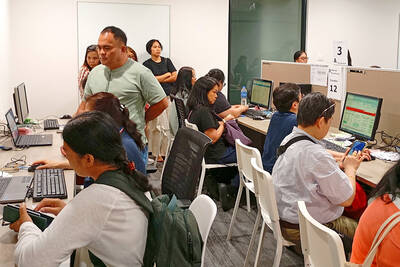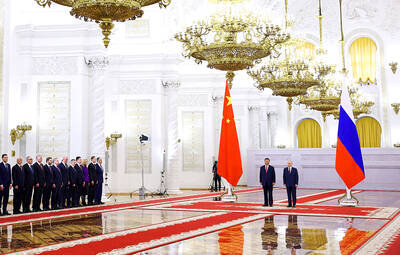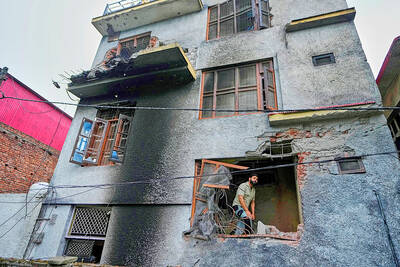South Korean nuclear experiments revealed earlier this year produced minute amounts of highly enriched uranium and plutonium but there is no evidence to link them to an attempt to make weapons, the UN atomic watchdog said.
The report, drawn up by the International Atomic Energy Agency and made available Thursday to The Associated Press, followed up on revelations that South Korea sporadically dabbled in uranium enrichment and plutonium reprocessing from the early 1980s to 2000.
Uranium enriched to weapons grade and plutonium can both be used to make nuclear warheads. Officials acknowledged the experiments earlier this year amid pervasive IAEA queries about past activities but insisted they were small-scale and conducted by scientists who never informed the government.
Beyond establishing that those experiments appeared to have produced only small amounts and had been restricted to the laboratory, the report also revealed a separate attempt at uranium enrichment that it said had not been previously reported to the agency.
But the report said this attempt -- to enrich uranium chemically -- resulted in extremely low enrichment, far below the 90 percent minimum normally considered weapons grade.
South Korea has scrambled to deny it has ambitions for a nuclear weapons program following the first revelations in late August, and the government has sought to downplay its role in what it says were unauthorized experiments.
The report -- prepared for a Nov. 25 meeting of the IAEA's board of governors -- noted government assertions that the highest official aware of enrichment experiments between 1993 and 2000 was the head of a government nuclear research agency in the city of Dajeon and that the activities included only 14 scientists.
But such claims were questioned by diplomats familiar with the investigations of the Vienna-based IAEA. The fact that uranium metal normally used in enrichment was produced nearly two decades before the laser enrichment experiments were carried out four years ago suggests long-range planning that was targeted to enrichment, said one diplomat, on condition of anonymity.
Action by the IAEA board on the report could set a precedent for Iran, which the United States accuses of trying to develop nuclear weapons.
If the board decides that the South Korean violations need to be reported to the UN Security Council, then the US case for similar action against Tehran -- with a much more serious record of nuclear transgressions -- would likely receive a boost.
The report, written by IAEA head Mohamed ElBaradei, said failure by South Korea to report the experiments were "a matter of serious concern," because they violated agreements signed with the IAEA linked to the Nonproliferation Treaty.

A new online voting system aimed at boosting turnout among the Philippines’ millions of overseas workers ahead of Monday’s mid-term elections has been marked by confusion and fears of disenfranchisement. Thousands of overseas Filipino workers have already cast their ballots in the race dominated by a bitter feud between President Ferdinand Marcos Jr and his impeached vice president, Sara Duterte. While official turnout figures are not yet publicly available, data from the Philippine Commission on Elections (COMELEC) showed that at least 134,000 of the 1.22 million registered overseas voters have signed up for the new online system, which opened on April 13. However,

ALLIES: Calling Putin his ‘old friend,’ Xi said Beijing stood alongside Russia ‘in the face of the international counter-current of unilateralism and hegemonic bullying’ Chinese President Xi Jinping (習近平) yesterday was in Moscow for a state visit ahead of the Kremlin’s grand Victory Day celebrations, as Ukraine accused Russia’s army of launching air strikes just hours into a supposed truce. More than 20 foreign leaders were in Russia to attend a vast military parade today marking 80 years since the defeat of Nazi Germany in World War II, taking place three years into Russia’s offensive in Ukraine. Putin ordered troops into Ukraine in February 2022 and has marshaled the memory of Soviet victory against Nazi Germany to justify his campaign and rally society behind the offensive,

ENTERTAINMENT: Rio officials have a history of organizing massive concerts on Copacabana Beach, with Madonna’s show drawing about 1.6 million fans last year Lady Gaga on Saturday night gave a free concert in front of 2 million fans who poured onto Copacabana Beach in Rio de Janeiro for the biggest show of her career. “Tonight, we’re making history... Thank you for making history with me,” Lady Gaga told a screaming crowd. The Mother Monster, as she is known, started the show at about 10:10pm local time with her 2011 song Bloody Mary. Cries of joy rose from the tightly packed fans who sang and danced shoulder-to-shoulder on the vast stretch of sand. Concert organizers said 2.1 million people attended the show. Lady Gaga

CONFLICTING REPORTS: Beijing said it was ‘not familiar with the matter’ when asked if Chinese jets were used in the conflict, after Pakistan’s foreign minister said they were The Pakistan Army yesterday said it shot down 25 Indian drones, a day after the worst violence between the nuclear-armed rivals in two decades. Pakistani Prime Minister Shehbaz Sharif vowed to retaliate after India launched deadly missile strikes on Wednesday morning, escalating days of gunfire along their border. At least 45 deaths were reported from both sides following Wednesday’s violence, including children. Pakistan’s military said in a statement yesterday that it had “so far shot down 25 Israeli-made Harop drones” at multiple location across the country. “Last night, India showed another act of aggression by sending drones to multiple locations,” Pakistan military spokesman Ahmed